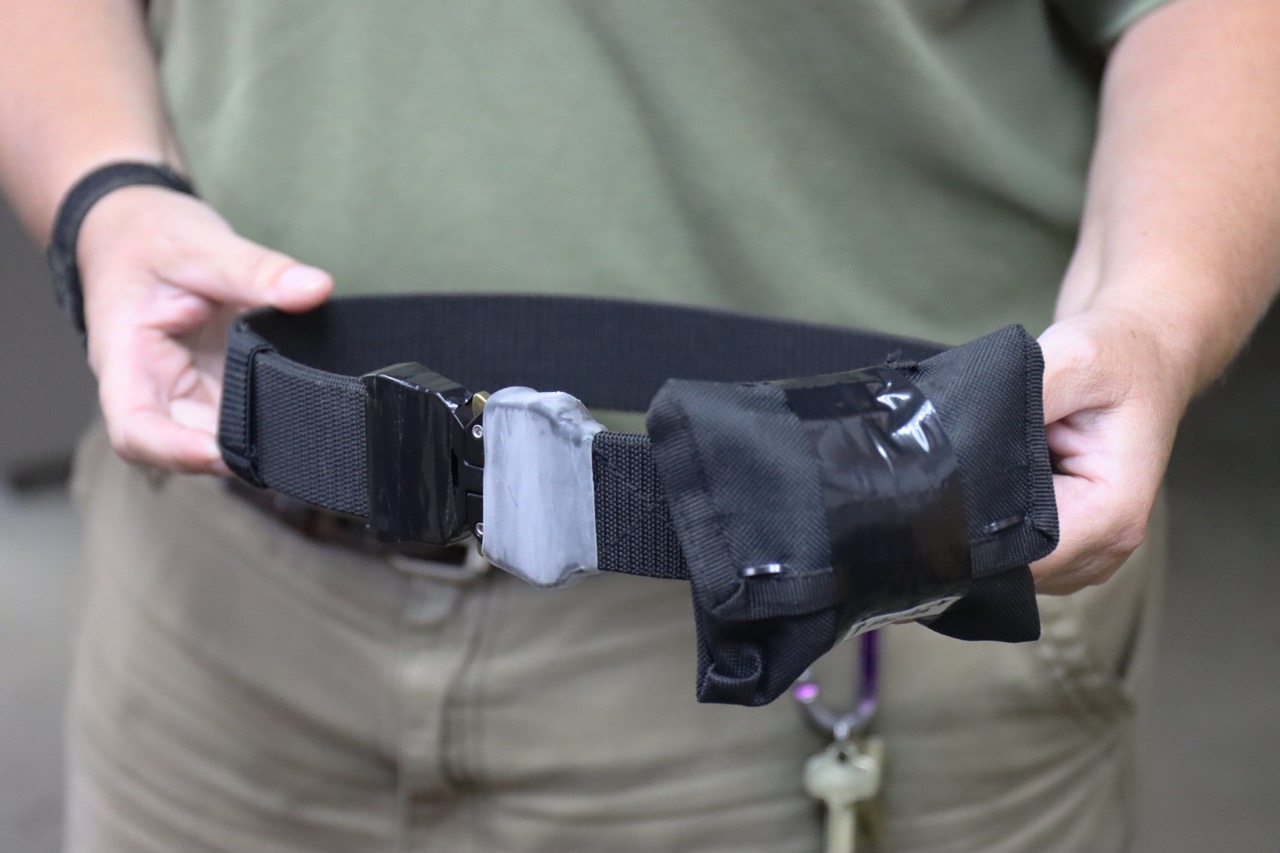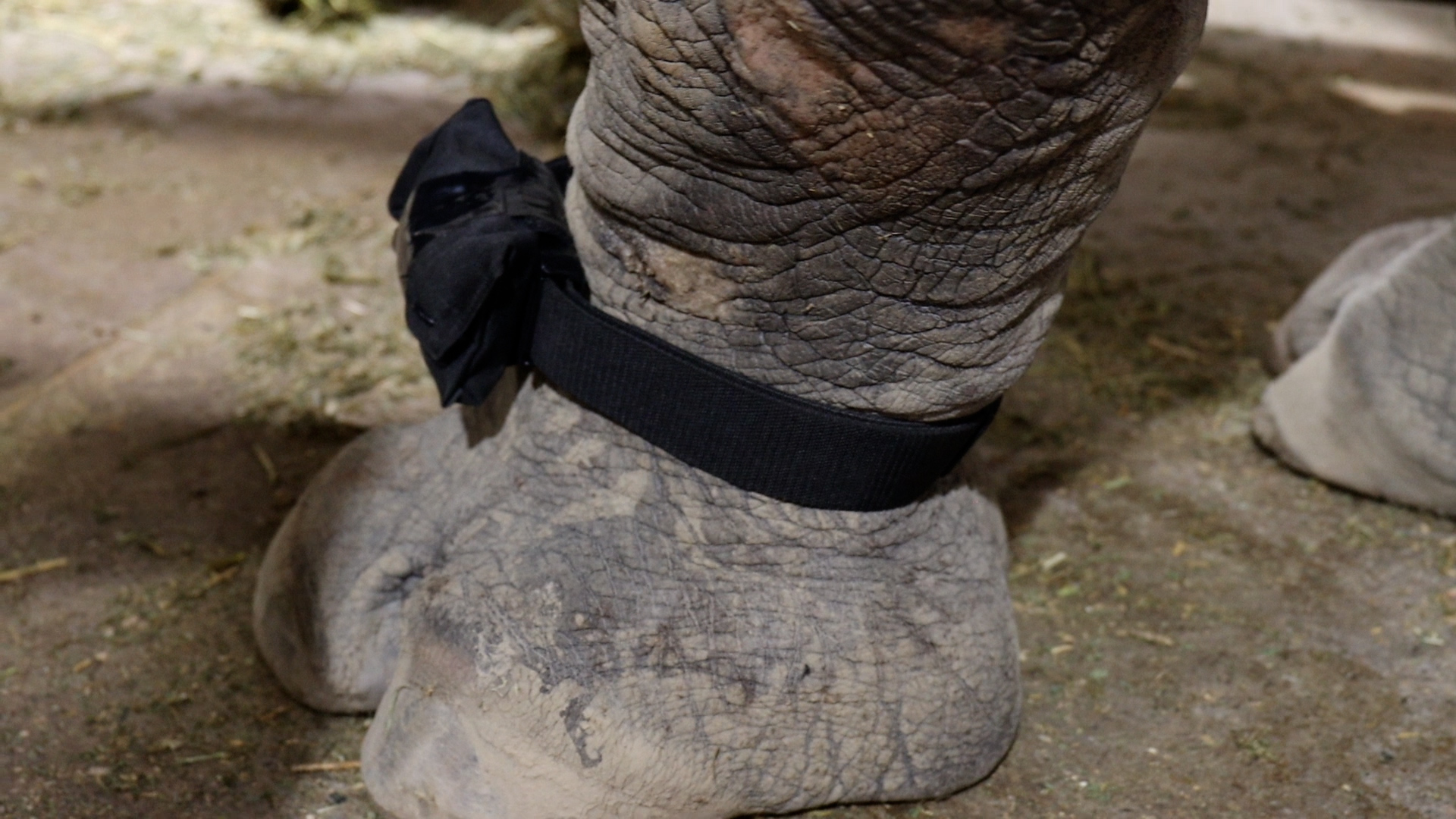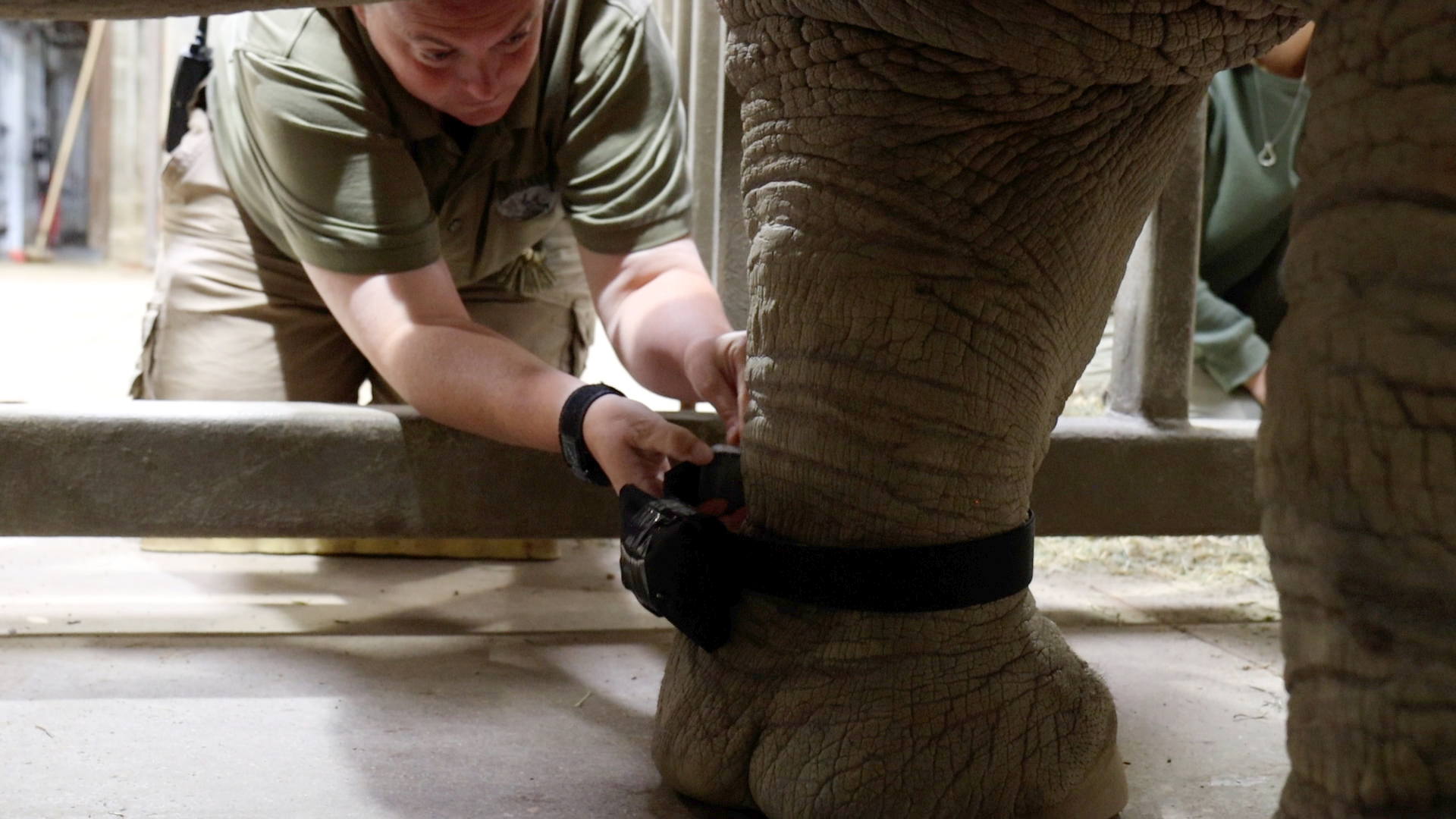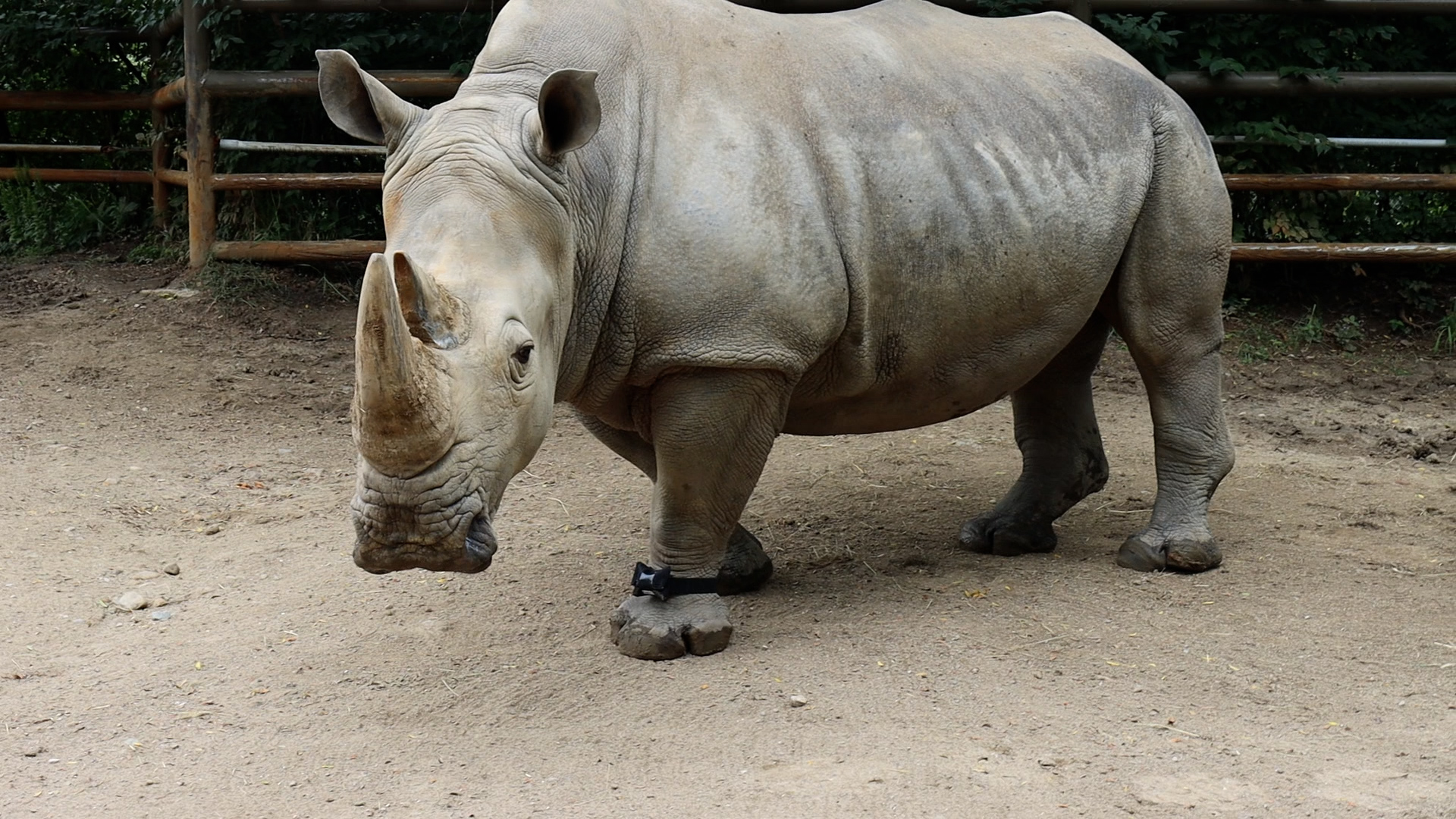In the United States, 74 zoos managed by the Association of Zoos & Aquariums (AZA) – including the Indianapolis Zoo – provide safe havens for three of the world’s five rhino species. These facilities share a commitment to save the rhinos and other wildlife from extinction but maintaining sustainable and healthy zoo populations can be difficult. Rhinos face a lot of challenges when it comes to breeding, physical & behavioral health, and diseases. Which is why it is important that animal care staff in all these locations are given the proper tools and knowledge to mitigate these issues and provide the best care for them.
The American Institute of Rhinoceros Science (AIRS) is a coalition of expert rhino scientists that conduct scientific research for optimizing health and well-being of rhinos in human care. This diverse team of experts are made up of the brightest minds from the Cincinnati Zoo & Botanical Garden, The Wilds, Disney’s Animals, Science and Environment, George Mason University, and South-East Zoo Alliance for Reproduction and Conservation and Stellenbosch University.
This year, the AIRS coalition has been conducting a yearlong study focusing on the high priority research needs of rhinos in AZA accredited zoos. These priorities include physical fitness, iron storage in browsing rhinos, reproductive success and behavioral/environmental factors. Today, our white rhinos – Mambo, Gloria and Spike, are taking part in this yearlong study.
We sat down with Drew Arbogast, a PHD student from George Mason University and AIRS project researcher– to find out more about this study being conducted and what we hope to learn from it.
Q. Can you tell us more about what exactly this study is and what is the purpose?
A. “So today we are working on the AIRS Project – American Institute of Rhinoceros Science – and specifically we’re doing some of the physical fitness and behavior aspects of the project. This morning we put on anklets or activity trackers on the rhinos’ ankles, and what those are hopefully going to do for us is look at not only location, but also activity levels and differentiating between resting and standing – and different behaviors and activity levels like that. We also did some morphometric body measurements, we did some bodyfat measurements, and we’re doing some behavioral observations as well.”
Q. How long do we expect the study to last?
A. “We have a three-year grant funded by IMLS – Institute of Museum and Library Services – and each facility is participating for one year. Basically, we are looking at changes in management strategy, in the summertime versus the wintertime, so I’ll be back in the wintertime to look at some of their indoor activity. And then, throughout the intermittent months we have our keepers doing blood draws, reproductive sampling and a bunch of other different data collections throughout the year.”
Q. In your opinion, why is this study something the public should know about?
A. “This study is really important, it’s actually a really great multi-disciplinary collaborative study. We have over 40 facilities onboard at this point, conducting this research. And I would say the most important thing for the public to know about this project – is that it really just highlights the fantastic work that all the animal care staff is doing. Everything that we’re doing here – all the data that I am collecting – is completely voluntary by the rhinos. It’s a true testament to the trust in those relationships that the animal teams are building to allow us to get this really cool data.”
We also sat down with Senior Plain Keeper Amber Berndt, about her involvement with the study and why this is important for the species and conservation efforts.
Q. What is your role in this study?
A. “I am one of the primary keepers for our large mammals, I did quite a bit of the training to get these guys used to getting the anklets measured around them, putting tape measures on them, putting duct tape on their sides to simulate the electrodes being put on.”
Q. Why do you feel this study is important? Is this something every zoo should partake in?
A. “I think this is a great opportunity for our rhinos to be a part of. Rhinos and any species of animal in captivity is always evolving, so what we can do to prolong their lives, lessen the amount of medical issues that may arise, so I think this is a good long-term project to look at what we can do for our rhinos in the future.”
Q. Today is World Rhino Day (Sept 22), what would you like the public to know about the significance of this day?
A. “World Rhino Day is a day of awareness. It is to celebrate all five species of rhino and all the work that is being done to help save them. Rhinos are facing extinction due to loss of habitat and being poached for their horns – there are roughly 27,000 rhinos left in the world.”
Q. How can people get involved in conservation efforts?
A. “Spread awareness about rhinos, learn all that you can about them, you can donate to the International Rhino Foundation – that is a fantastic organization that is always working on various projects. You can help adopt an orphaned rhino calf, that maybe mom was killed for her horn. You can donate to the K9 or Horseback Mounting Units, that are helping the rangers patrol habitats. Or you could donate to the RPUs – which is Rhino Protection Units – that’s actually the rangers that are on the ground patrolling habitats. And also visit your local zoo. Get to know the rhinos that are in your hometown, get to know all about them, ask the keepers – just be aware of the extinction that they are facing.”
*Bonus
WATCH Amber, Drew and the Rhino Team apply the anklet trackers to the rhinos’ legs
Coming Soon: video series on the yearlong study on Zoo YouTube page




Pick your day. Pick your price. Pick your package. Prices online are cheaper than at the gate.